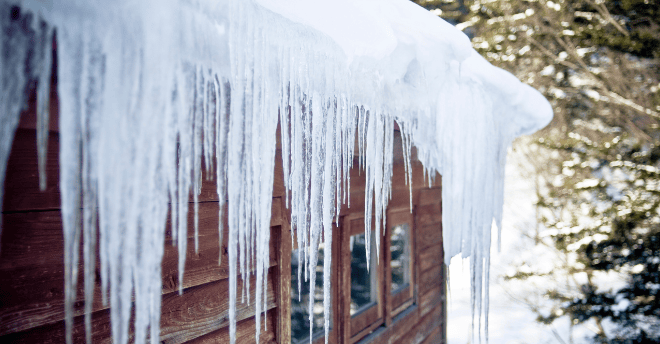Guide to Repairing or Replacing a Roof in the Connecticut Winter
Replacing or repairing your roof in the Connecticut winter is not only possible but can be a wise decision to prevent further damage to your home.
12/19/20243 min read


Winter in Connecticut brings picturesque snow-covered landscapes, cozy nights by the fireplace, and, unfortunately, challenges for homeowners dealing with roofing issues. If you're facing a leaky roof or considering a full replacement during the colder months, you might wonder: Is it okay to tackle such a project in the winter? Let's explore the ins and outs of repairing or replacing your roof during Connecticut's chilly season.
Is It Okay to Replace a Roof in the Winter?
Absolutely, it is possible to replace or repair a roof in the winter. While spring and summer are traditionally the peak seasons for roofing projects due to milder weather, winter roofing can be done safely and effectively with proper planning and the right professionals.
Winter roofing has its advantages:
Availability of Contractors: Roofing companies are generally less busy in the winter, which means you might find scheduling more flexible and even negotiate better pricing.
Immediate Resolution: Addressing roofing problems promptly prevents further damage from leaks, ice dams, and structural issues that cold weather can exacerbate.
However, winter roofing also presents challenges:
Weather Delays: Snowstorms and icy conditions can cause delays, extending the project's timeline.
Material Handling: Some roofing materials are sensitive to cold temperatures and require special handling to ensure proper installation.
What Temperature Is Too Cold to Put on a New Roof?
Temperature plays a crucial role in roofing projects, primarily because of how it affects roofing materials and the safety of the installation crew.
Ideal Temperature Range: The optimal temperature for installing asphalt shingles—the most common roofing material—is between 40°F and 85°F. This range allows the shingles to be flexible and the sealant to activate properly.
Challenges Below 40°F:
Brittleness: Asphalt shingles can become brittle in cold weather, increasing the risk of cracking or breaking during installation.
Sealant Activation: The adhesive strips on shingles, designed to seal them together, may not activate effectively in low temperatures.
Workarounds:
Careful Handling: Roofers can take extra precautions, like storing shingles in a warm place before installation and handling them gently.
Hand-Sealing: Applying roofing cement manually to each shingle can ensure they stay in place until the sealant activates.
While roofing can be done in temperatures below 40°F, it's essential to work with experienced professionals who understand these challenges and know how to mitigate them.
Will New Shingles Seal in Cold Weather?
New shingles come with a self-sealing strip that relies on heat from the sun to activate and bond the shingles together, creating a watertight barrier. In cold weather, this process doesn't happen as quickly or effectively.
Delayed Sealing: In winter, shingles may not seal until the temperature rises sufficiently, which could be weeks or even months later.
Risks of Unsealed Shingles:
Wind Damage: Unsealed shingles are more susceptible to being lifted or torn off by strong winds.
Water Infiltration: Gaps between unsealed shingles can allow water to seep underneath, leading to leaks.
Solutions:
Manual Sealing: Professional roofers can manually apply roofing adhesive to ensure shingles stay in place until they self-seal.
Quality Materials: Using shingles designed for cold-weather installation can improve performance.
Tips for Winter Roofing in Connecticut
Choose the Right Contractor: Hire a roofing company experienced in winter installations. They'll know the best practices and how to handle materials in cold conditions.
Safety First: Ensure the crew follows safety protocols. Icy roofs can be hazardous, and proper equipment is essential.
Monitor the Weather: Plan the project around the weather forecast to avoid severe cold snaps or storms.
Consider Alternative Materials: Some roofing materials, like metal roofs, are less affected by cold temperatures and could be a viable option.
Prepare for Longer Timelines: Be flexible with scheduling, as weather delays are more common in winter.
Conclusion
Replacing or repairing your roof in the Connecticut winter is not only possible but can be a wise decision to prevent further damage to your home. While cold temperatures present unique challenges—such as brittle shingles and delayed sealing—working with experienced professionals and taking appropriate precautions can lead to a successful roofing project.
Don't let the winter chill deter you from safeguarding your home. By understanding the considerations and collaborating with the right experts, you can ensure your roof stands strong against the elements, keeping your home warm and dry throughout the season.
Connecticut Roofing Specialist
High-quality roofing solutions for homes and businesses across Connecticut, including West Hartford, Newington, Wethersfield, East Hartford, Bloomfield, South Windsor, Glastonbury, and Windsor.
Contact
info@connecticutroofingspecialist.com
860-787-8898
Connecticut Roofing Specialist © 2024. All rights reserved.


Get a professional website and expert marketing with Handyman Digest, part of the Marketing Web Pro Network. Boost your online presence and grow your business today!
